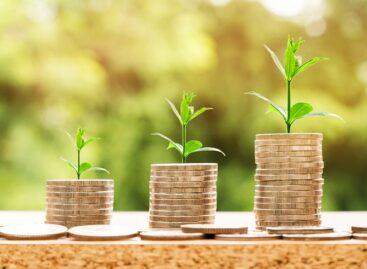Intrum: We will avoid a deep crisis, but a protracted recession and credit crisis may come
Based on the solvency report of Intrum and GKI, the financial situation of Hungarian households is not expected to improve significantly in 2023 either, although the crisis will not be as deep as during the pandemic. By the end of 2022, the solvency of families continued to deteriorate, which could lead to a large-scale collapse of household loans next year.

In the last quarter of 2022, the negative trend regarding the solvency of the Hungarian population continued, and the financial situation of households worsened on average in the last three months. The Intrum Solvency Index (IFI), a measure of families’ solvency prepared by Intrum and GKI, recorded an average value of 2.3 in the fourth quarter, which is the lowest since 2013. Compared to the same period of the previous year, the decrease is more than 90 percent.
Solvency is influenced by factors such as employment, income or price increases – in the past year, households were in a worse situation mainly due to double-digit inflation, the rise in the prices of energy carriers and stagnant wages. Hungarian inflation was 22.5 percent in November 2022, the highest in the EU. The problem was compounded by the removal of the gasoline price cap in December – because of this, solvency reached its lowest point in December.
Judit Üveges, Intrum’s sales director, pointed out that the Hungarian population primarily feels the effects of global economic problems.
“The uncertainty of the energy market and the weakness of the Chinese economy are hindering economic growth worldwide. From a certain point of view, the good news is that the Hungarian and international numbers do not point in the direction of a sudden, deep crash, for this reason, for example, there is no need to fear the release of unemployment. The residential and corporate sectors of advanced economies also have significant reserves. The indebtedness of households cannot be said to be high, and the savings rate has risen to a level not seen in a long time, due, among other things, to subsidies paid out during the pandemic. A part of the real value of these savings has already been eroded by inflation, but there is still enough left to soften the extent of the recession.”
In the third quarter of 2022, the Hungarian GDP still increased year-on-year, although it already decreased by 0.4 percent compared to the previous quarter, i.e. it entered a technical recession. Recent solvency data predict a continued recession as domestic consumption falls.
Related news
KSH: industrial producer prices in November 2025 were on average 2.7 percent lower than a year earlier and 0.3 percent lower than the previous month’s prices
🎧 Hallgasd a cikket: Lejátszás Szünet Folytatás Leállítás Nyelv: Auto…
Read more >Fidelity Kitekintés 2026: Ne becsüljük alá az inflációt!
🎧 Hallgasd a cikket: Lejátszás Szünet Folytatás Leállítás Nyelv: Auto…
Read more >Company Trend 2025 – domestic businesses under strong pressure, in a negative trend
🎧 Hallgasd a cikket: Lejátszás Szünet Folytatás Leállítás Nyelv: Auto…
Read more >Related news
The 6 most important payment trends in 2026:
🎧 Hallgasd a cikket: Lejátszás Szünet Folytatás Leállítás Nyelv: Auto…
Read more >Tourism continues to expand dynamically
🎧 Hallgasd a cikket: Lejátszás Szünet Folytatás Leállítás Nyelv: Auto…
Read more >FEOSZ creates a certificate for consumer-friendly web stores
🎧 Hallgasd a cikket: Lejátszás Szünet Folytatás Leállítás Nyelv: Auto…
Read more >







